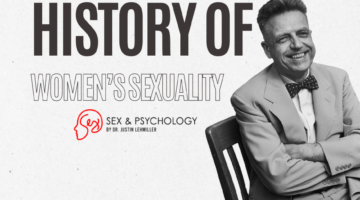Are College Students Today Hooking Up More Than Ever?
September 16, 2013 by Justin Lehmiller
For the last several years, the popular media has been running story after story about college “hookup culture.” These articles argue that today’s youth are more sex-crazed than previous generations and that casual sex is largely replacing traditional dating and relationships. But is there any truth to these frequent claims? A closer look at trends in sexual behavior reveals that college students today are no more sexually active than students were a couple of decades ago.
As some evidence of this, researchers from the University of Portland compared data collected as part of the General Social Survey at two different points in time: 1988-1996 and 2002-2010 [1]. Specifically, they looked at the sexual behaviors of 18-25-year-old adults in the U.S. during each of those eight-year periods. What they found was that students today were not having more sex or more partners than students in the 1980s and 90s.
Among the 1988-1996 students, 65.2% reported having sex at least weekly during the last year. For the 2002-2010 students, the number was a bit lower, at 59.3%. The number of students who reported having more than one sexual partner during the last year was almost identical in each cohort (just under 32%). Likewise, the number who reported having more than two sexual partners since the age of 18 was also very similar (51.7% for the earlier group and 50.5% for the later group).
The researchers also found that attitudes toward premarital sex did not differ between the cohorts. In fact, the only sexual attitude that changed significantly across time was increased acceptance of same-sex relationships in recent years.
One notable way that sexual behaviors have changed somewhat is that today’s students were less likely to report having sex with a spouse or a steady sex partner (77.1% in the 2002-2010 group vs. 84.5% in the 1988-1996 group), but this likely reflects the fact that people are postponing marriage longer and longer and there is less social pressure to settle down at a young age. One other important difference is that today’s students were more likely to report having a sexual partner who was a friend (68.6%) than students from the past (55.7%), suggesting that modern students are more likely to attempt “friends with benefits” relationships.
In short, despite popular media claims about the increased sexualization of modern college campuses, national survey data reveal that there have been relatively few changes in students’ sexual attitudes and behaviors in the past few decades. Students today do not appear to be having more partners or more sex. That said, it is indisputable that there’s a lot of sex happening in college; however, this started with previous generations, so we should stop pretending like it’s a new phenomenon.
Want to learn more about The Psychology of Human Sexuality? Click here for a complete list of articles or like the Facebook page to get articles delivered to your newsfeed.
[1] Monto, M., & Carey, A. (2013). A new standard of sexual behavior? Are claims associated with the “hookup culture” supported by nationally representative data? Paper presented at the Annual Meeting of the American Sociological Association.
Image Source: Photo by diego_cervo on iStockphoto

Dr. Justin Lehmiller
Founder & Owner of Sex and PsychologyDr. Justin Lehmiller is a social psychologist and Research Fellow at The Kinsey Institute. He runs the Sex and Psychology blog and podcast and is author of the popular book Tell Me What You Want. Dr. Lehmiller is an award-winning educator, and a prolific researcher who has published more than 50 academic works.
Read full bio >


